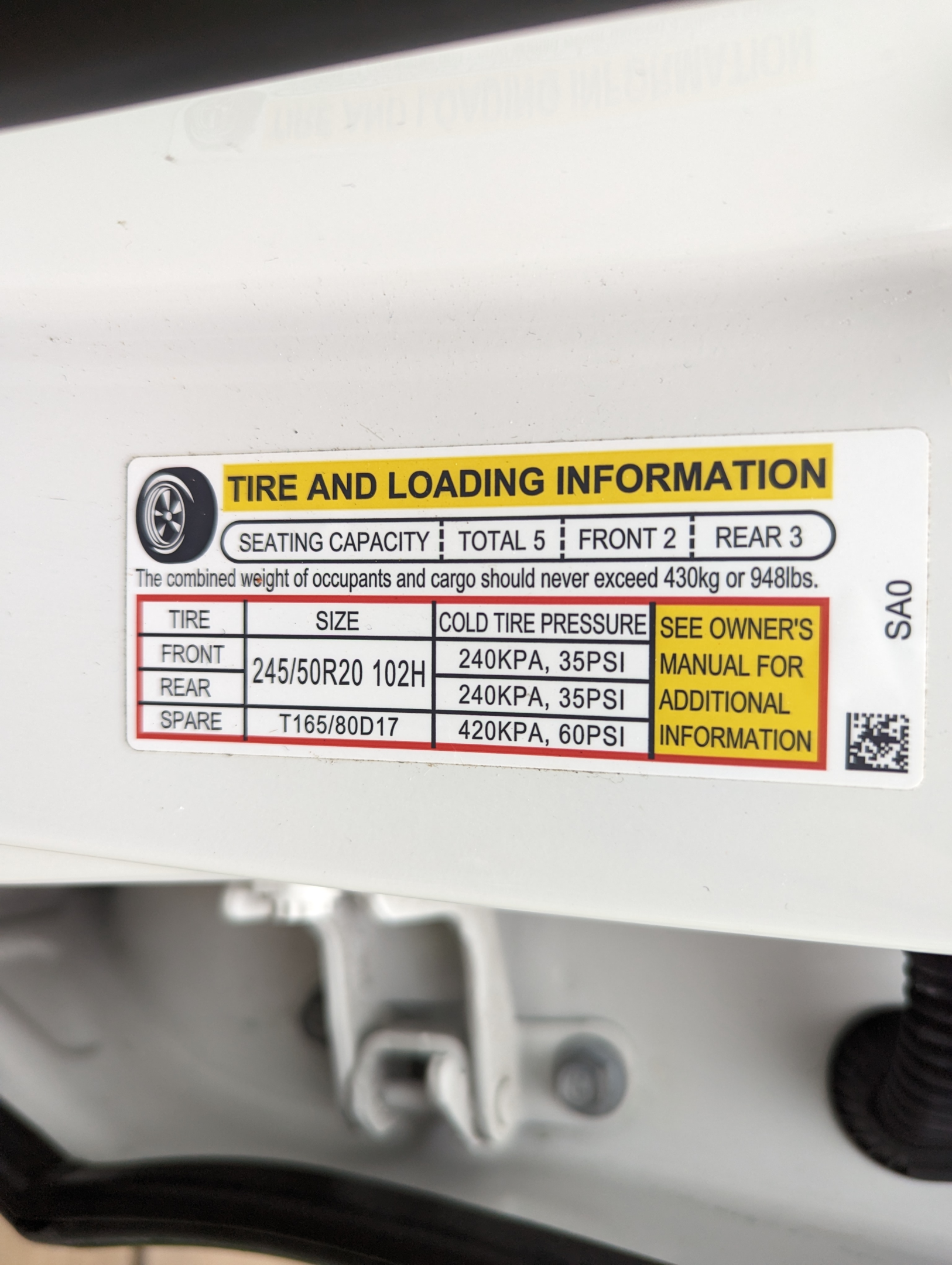When it comes to our vehicles, tires are often an overlooked but critical component. They are the only point of contact between your vehicle and the road, and the right set of tires can significantly impact your driving experience, safety, and fuel efficiency. In this comprehensive guide, we will delve into the world of vehicle tires, exploring the various types available, their functions, and essential considerations to help you make an informed choice. 332 million tires were sold in 2022, so let’s dive in on all the different types of tires.

Types of Tires
1. All Season Tires
All season tires are the most common type found on vehicles today. They are designed to provide decent performance in a variety of conditions, including dry, wet, and light snowy conditions. All-season tires are a versatile choice for drivers who don’t want to change their tires seasonally. They offer a balanced mix of traction, durability, and comfort, making them suitable for most everyday driving situations. All season tires are the very popular, go-to option but depending on where you live, like a warm or cold climate, you may want to consider other possibilities.

2. Summer Tires
Summer tires, also known as performance tires, are engineered for warm weather conditions. They offer exceptional grip and handling on dry roads, making them a preferred choice for sports cars and high-performance vehicles. However, their performance can deteriorate significantly in cold or snowy weather, making them less suitable for winter driving.
3. Winter Tires
Winter tires, or snow tires, are specifically designed to excel in cold and snowy conditions. They feature a unique rubber compound that remains flexible at low temperatures, providing better traction on icy and snow-covered roads. The tread patterns on snow tires are designed to bite into snow and channel away slush and water, enhancing grip. If you live in an area with harsh winters, winter tires are a must for safe and confident driving.

4. Performance Tires
Performance tires are engineered for sports cars and high-performance vehicles. They prioritize grip, handling, and responsiveness, often sacrificing tread life and ride comfort. These tires feature advanced rubber compounds and tread patterns designed for maximum traction on dry or wet roads. Keep in mind that performance tires may not be suitable for everyday commuting, especially in areas with harsh weather conditions.

5. All-Terrain Tires
All-terrain tires are a popular choice for SUVs and trucks. They are designed to perform well both on and off-road. These tires feature a more aggressive tread pattern that provides enhanced traction on gravel, dirt, and uneven terrain. While they may not excel in extreme off-road conditions, they offer a good compromise between on-road and off-road performance.

6. Mud-Terrain Tires
Mud-terrain tires are the go-to choice for serious off-road enthusiasts. They feature a rugged tread pattern with large, deep lugs that provide excellent traction in muddy, rocky, and challenging terrain. However, they tend to be noisy and less comfortable on regular roads. Mud-terrain tires are typically reserved for off-road vehicles and adventures.
7. Run-Flat Tires
Run-flat tires are designed to continue functioning even when punctured, allowing you to drive to a safe location or repair shop without immediate replacement. These tires have reinforced sidewalls that support the vehicle’s weight when there is a loss of air pressure. They can be a convenient choice for added safety, but they often come at a higher cost and may provide a stiffer ride.
8. Light Truck Tires
Light truck tires, or LT tires, are specialized for SUVs and trucks, offering durability and load-carrying capacity. They provide versatile performance, suitable for both on-road comfort and off-road adventures, making them ideal for various driving conditions. With extra ply, they are essential for ensuring your vehicle can handle diverse roles and terrains with confidence.

Factors to Consider When Choosing Tires
1. Driving Conditions
Your local climate and driving conditions should play a significant role in tire selection. If you experience harsh winters, winter or snow tires are a must. For warm and dry climates, summer or all-season tires may be sufficient.
2. Vehicle Type
The type of vehicle you drive also affects your tire choice. Sports cars may benefit from performance tires, while SUVs and trucks often do well with all-terrain or mud-terrain tires.
3. Tire Size
Ensure you select the right tire size for your vehicle. Refer to your vehicle’s owner’s manual or the sidewall of your current tires for this information.

4. Tire Tread
Tire tread patterns vary significantly among different types of tires. Consider the type of driving you do most and choose a tread pattern that suits your needs.

5. Tread Life
Tire longevity is essential for your budget. Performance tires tend to wear faster, while all-season tires typically last longer.
6. Budget
Tire prices can vary widely, so set a budget and explore options within that range. Remember that quality tires are an investment in your safety and driving experience.
For a more in-depth look, we break this down in more detail here
Maintaining Your Tires
Once you’ve chosen the right tires for your vehicle, proper maintenance is crucial to ensure their longevity and performance. Regularly check your tire pressure, rotate your tires, and keep them properly aligned. This will not only extend their lifespan but also improve your vehicle’s fuel efficiency and safety.
Remember that tires are a critical component of your vehicle’s safety and performance, so invest wisely in a set that suits your driving conditions and style. Whether it’s the versatile all-season, the rugged all-terrain, or the performance-focused summer tires, the perfect tire is out there to enhance your driving experience. For more info, we dive into that here
Assess Your Driving Needs
Before diving into tire options, it’s essential to assess your driving needs and priorities. Consider the following factors:

1. Climate and Weather Conditions
Start by evaluating the climate in your region. Do you experience hot summers, cold winters, heavy rainfall, or significant snowfall? Your local weather patterns will dictate the type of tire that is best suited for your area.
- Hot Summers: If you live in a region with scorching summers, consider summer or performance tires for better grip and handling in high temperatures.
- Cold Winters: For areas with harsh winters, winter tires are a must to ensure safety and traction on icy or snowy roads.
- Variable Conditions: If your region experiences a mix of weather conditions, all-season tires might be the most practical choice, offering balanced performance year-round.
2. Driving Style and Conditions
Think about how and where you primarily drive:
- Highway Commuting: If you mostly use your vehicle for highway commuting, prioritize tires with good fuel efficiency, comfort, and low road noise.
- Off-Roading: For those who enjoy off-roading or frequently drive on unpaved roads, all-terrain or mud-terrain tires are ideal.
- Performance Driving: If you have a sports car or enjoy spirited driving, performance tires can enhance your vehicle’s handling and grip.
3. Vehicle Type
The type of vehicle you drive also plays a role in tire selection:
- Sedans and Family Cars: All-season or touring tires are suitable for everyday sedans and family cars.
- SUVs and Trucks: Consider all-terrain tires for SUVs and trucks, especially if you occasionally venture off-road.
- Sports Cars: High-performance or summer tires are designed for sports cars and provide excellent grip and responsiveness.
Understand Tire Size and Specifications
Once you’ve determined your driving needs, you need to understand your vehicle’s tire size and specifications. This information is typically found in your vehicle’s owner’s manual or on the sidewall of your current tires. Key tire specifications include:
- Tire Size: This is typically displayed as a series of numbers and letters, such as P225/65R17. Each element represents different aspects of the tire’s size, including width, aspect ratio, and diameter.
- Load Index: Indicates the maximum weight the tire can support.
- Speed Rating: Represents the maximum speed the tire can handle safely.
- Tread Pattern: Different tread patterns are designed for specific purposes, such as all-season, winter, or performance driving.
Budget Considerations
Your budget is another essential factor when choosing tires. Keep in mind that while it can be tempting to opt for the cheapest option, quality tires are an investment in your safety and driving experience. Consider the following budget-related factors:
- Long-Term Savings: High-quality tires may come with a higher initial cost but often offer better longevity and fuel efficiency, which can save you money in the long run.
- Seasonal Tire Changes: If you opt for two sets of tires (e.g., all-season and winter tires), consider the cost of changing them seasonally, including storage fees if necessary.
Research Tire Brands and Reviews
Not all tire brands are created equal, so it’s essential to do some research before making a decision. Here are some tips:
- Brand Reputation: Well-known tire manufacturers often have a reputation for quality and reliability. Brands like Michelin, Bridgestone, and Goodyear are widely recognized for their tire quality.
- Read Reviews: Look for customer reviews and expert opinions to get insights into how specific tires perform in real-world situations. Online forums, automotive websites, and social media can be valuable sources of information.
Consult with a Tire Professional
If you’re still uncertain about which tires to choose, it’s a good idea to consult with a tire professional or visit a reputable tire shop. They can provide expert advice based on your vehicle, driving habits, and local conditions. Additionally, they can help you find the best deals and promotions.
Conclusion
There are many tire types. Choosing the right tires for your vehicle is a critical decision that should not be taken lightly. By assessing your driving needs, understanding tire size and specifications, considering your budget, researching tire brands, and seeking expert guidance, you can make an informed choice that enhances your driving experience and ensures your safety on the road. Remember that the right tires are an investment that pays off in terms of performance, longevity, and overall satisfaction.

